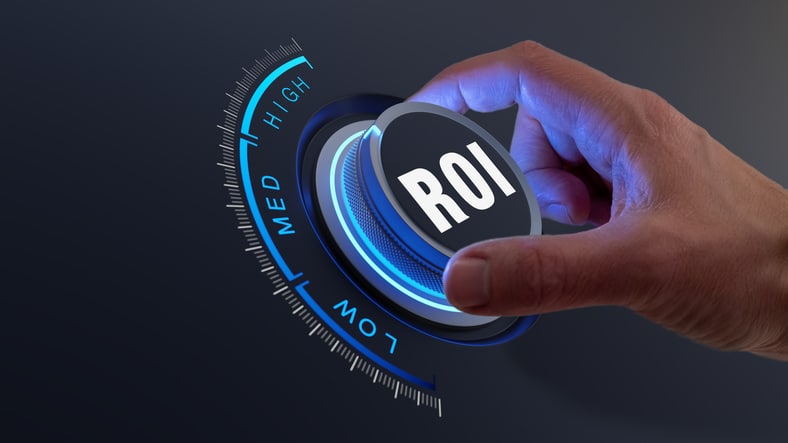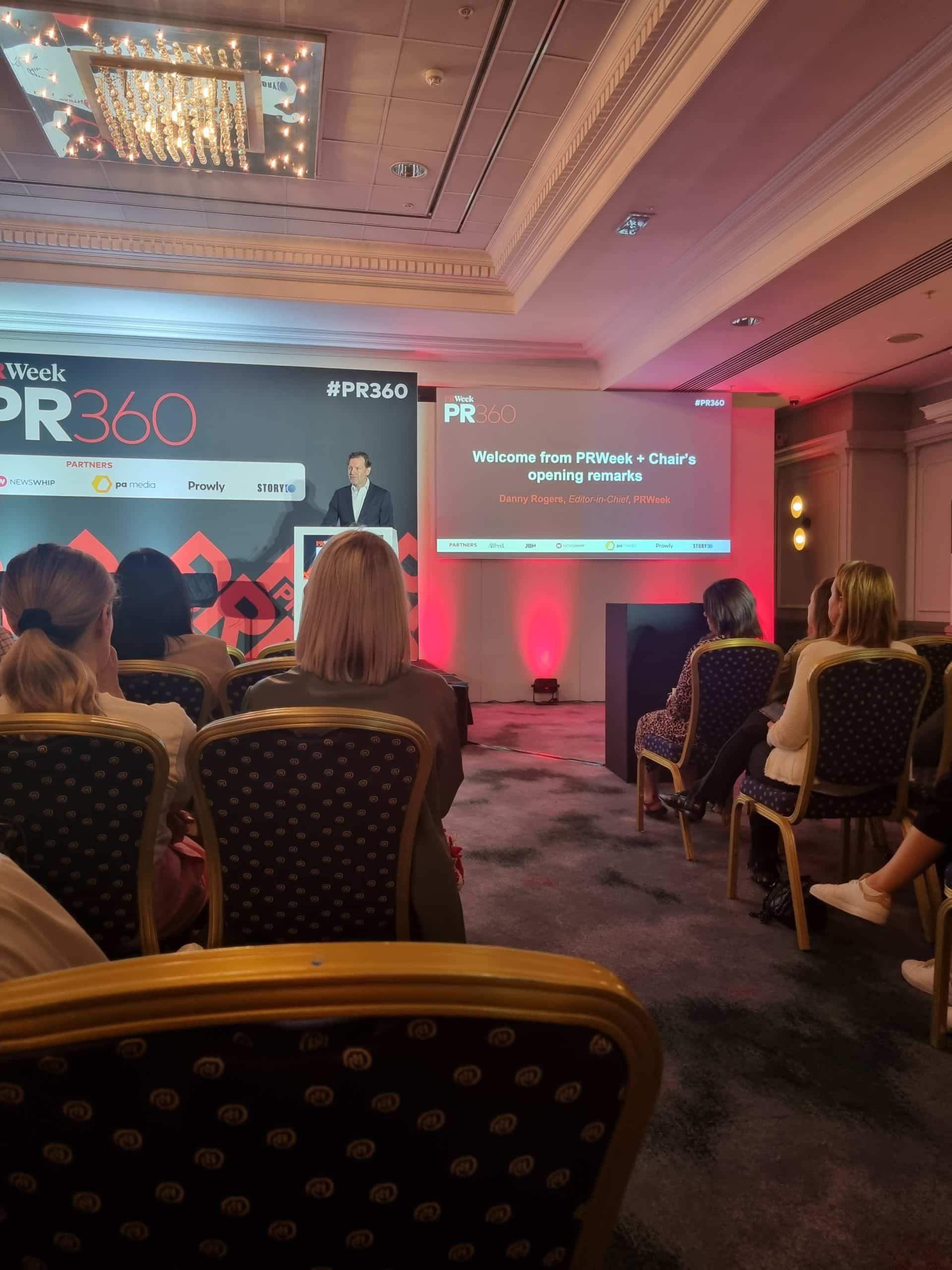
In the last four months, I have seen a ton of clever marketing and comms people writing about the effect that ChatGPT is going to have on our sector and it prompted me to write something myself that would help people who don’t know everything about it just yet.
Now as a tech PR blogger and all round geek I have used it a fair bit, and tested it on various bits and pieces and it is amazing for giving you a helping hand and I think you will be surprised by the results.
Public relations involves the strategic use of communication processes to create and maintain a positive brand image and ensure a good reputation. In this digital age when information has been democratised, brands need to all the more streamline their PR processes. The goal is to control the flow of information as quickly as possible to ensure effective reputation management.
The good news is, brands have many tools at their disposal to streamline PR processes and I use a ton of them myself. They can, for instance, take advantage of new AI solutions like ChatGPT to ensure PR success. This post will discuss how brands can leverage ChatGPT effectively:
What Is ChatGPT?
ChatGPT is an AI-powered language model that uses natural learning algorithms to generate human-like text responses to user queries. It can do this because the AI-powered chatbot has been fed and trained on massive data from the internet.
Although the tool has limitations, its capacity to scour the Internet for information and communicate it properly can revolutionise the way PR professionals work. Whether you’re working in a marketing, crisis management, or a consumer PR agency or in-house for a big corporate brand ChatGPT can help you save time and increase your chances of running effective PR campaigns. But how exactly does ChatGPT work?
How ChatGPT Works: Getting Started
Using ChatGPT for PR is relatively easy so don’t be worried. All you need to do is input a prompt that outlines what you’re looking for, and the algorithm will use that information to generate a response.
However, it’s important to note that the quality of the response you receive will depend on your ability to guide the algorithm and help it understand the response you expect. Hence, a prompt must be specific, clear, and detailed.
For example, if you’re looking to generate a media pitch about a new product launch, your prompt can be:
“Write a media pitch about our new product launch. [Insert details on the product features and benefits, as well as quotes from industry experts who have reviewed the product]”.
You can also include other guiding details like the tone, number of paragraphs, word count, your audience, and relevant background information like the sector category of your organisation.
What Are the Limitations of ChatGPT
There’s certainly a lot of hype about AI and AI tools at the moment. In fact, the hype reminds me a bit of the early part of this century when Facebook launched and we got the boom of social media. It’s certainly going to result in some massive changes in the way we work and hopefully, they will be for the better.
Personally, I don’t believe AI is going to lead to smaller teams and huge layoffs. At least in the present iteration of the tools anyway.
Rather, tools like ChatGPT are intelligent assistants that should and will make you more productive. You can use them for proofreading, to finesse a PR pitch you’re about to submit, or during a brainstorming session (I’ll show you how to do some of these things in a bit).
AI assistants can also help on those days when you have a brain freeze and are desperately searching for inspiration. You know, the days when you spend time procrastinating on LinkedIn or Facebook when you should be working – I do it too and it’s actually my job. Where you’re still rewriting the first sentence of a white paper after drinking your third cup of Nero premium coffee.
That’s where AI tools like ChatGPT are really handy.
That said, here are the PR processes ChatGPT can help you perform, and some sample prompts:
1. Creating & Optimising Content
When creating new PR content, ChatGPT can be particularly useful for generating various creative headlines, outlines, blog posts, and subject lines that grab attention. All you need to do is provide a specific prompt that outlines the key messages you want to convey and the audience you’re targeting.
In addition to generating new content, you can also use ChatGPT to optimise your existing content. For example, you can prompt ChatGPT to help you improve the readability, clarity, and persuasiveness of your press releases, social media posts, and other types of content.
How to Use ChatGPT to Create & Optimise Content
To use ChatGPT for PR content creation and optimisation, you must first identify the type of content you want to create or optimise, then craft detailed prompts to get responses.
For example, if you want to write a press release, your prompt might include information about the event or news you want to announce. Here’s a great example:
If you want to optimise an existing piece of content, you’d need to give another prompt that would result in the tool improving the content’s readability and clarity.

For example, if you want to optimise a product description, your prompt could be:
“Generate an optimised version of our product description [Insert original description]. Make it more engaging, and use a conversational tone that will appeal to young professionals. Keep the length of the post to approximately 200 words.”
When using ChatGPT for content creation and optimisation, remember to make necessary revisions and edits to the responses. This will help you get higher-quality content that fulfils the search intent and matches your needs.
You can further use tools like Writer’s AI content generator to ensure your piece sounds more conversational than outright AI-generated content as sometimes you can tell it doesn’t feel quite right.
2. Campaign Idea Generation
ChatGPT is a great tool for the idea-generation stage of a PR campaign. After all, it can generate creative and diverse ideas based on the prompts provided. To do this, it uses deep learning techniques and analyses vast amounts of text data.
You can test out the different ideas and approaches to see which ones resonate best with your audience. This, as a result, can help you run successful PR campaigns.
Using ChatGPT for PR campaign idea generation is especially effective if you’re on a tight deadline or have limited resources.
How to Use ChatGPT for Idea Generation
To use ChatGPT for PR idea generation, first identify the objective of your PR campaign. Do you want to achieve brand awareness, manage a PR crisis, or maybe you just want ideas for a product launch?
With your PR campaign’s objective in mind, the next step is inputting the prompts. To get the most from your brainstorming session with ChatGPT, start with a general prompt like “Generate ideas for a specific PR campaign [insert general topic]”. This will set the flow for your follow-up questions, helping you get good responses.
Next, craft detailed prompts that outline your campaign’s variables, like your target audience, key messages, and budget.
Here’s an example of a prompt for a product launch campaign with clear variables:
As I have shown above, ChatGPT can generate various ideas based on the prompt, like running a fitness challenge, partnering with fitness influencers, etc. You can then review the generated ideas, select the ones that best fit your objectives and budget, and develop them into a full-fledged successful PR campaign.
3. Social Media Management
ChatGPT can also be a valuable tool for social media management. You only need to provide the chatbot with some basic information about your brand and the purpose of the post. It will quickly generate copy that you can use for your social media content. This includes captions and hashtags for different posts based on the content.
You could also ask ChatGPT to generate a list of post ideas based on a particular theme or topic. Then use these ideas to plan out your content calendar for weeks or months.
How to Use ChatGPT for Social Media Management
Using ChatGPT for social media management is easy, provided you get the prompt right. Here are some ideas and prompts for how to use ChatGPT for social media management:
- “Suggest some social media post ideas related to [insert industry] that would appeal to our audience[insert more details about your brand].”
- “Generate fun or engaging questions related to our brand that we could use for a social media poll.”
- “What are some compelling caption options for this post [insert post details] that would make our audience want to engage with it?”
- “Generate creative and catchy hashtags we can use for this campaign [insert campaign details]?”
- “Generate a posting schedule for the next week, with post ideas, that ensures we have a consistent social media presence.”
Remember to always review and edit the text generated by ChatGPT to ensure it aligns with your brand voice and messaging.
4. Creating Press Releases
ChatGPT uses its language generation capabilities to create polished, engaging, and newsworthy angles for your press releases. This makes it easy for PR professionals to generate ideas and streamline the writing process.
You can also summarise the key points of a press release, from long-form content like research reports or whitepapers, making it easier to craft a brief but attention-grabbing press release.
How to Use ChatGPT to Create a Press Release
To use ChatGPT for PR releases, first, decide on the purpose of your press release and the key messages you want to convey to your target audience. Then input your prompts.
Here are great examples of prompts for different types of press releases you can use:
- Company announcement: “Write a press release announcing our latest product launch [insert details about the product you want to focus on and their unique selling point].”
- PR event announcement: “Create a press release to announce our upcoming PR event [insert details about the event like dates and location].”
- New partnership announcement: “Draft a press release to announce our new partnership with [company name]. Include key details about the partnership.”
- Executive appointment: “Write a press release to announce the appointment of our new CEO [insert the individual’s achievements] .”
Once you have entered the prompt, ChatGPT will generate a rough release draft you can refine and edit to your liking. You can then distribute it to your target audience through emails and social media, whose message you can generate on ChatGPT.
But remember, ChatGPT has no access to the internet well not from after 2021 at present. So for media contacts or journalists, who you’re not in direct contact with, you’ll need to use third-party tools to find email addresses you can use to share the press release. Here’s a handy list of the best email finder tools.
5. Streamlining Communication and Response Generation
In PR, we know effective communication is crucial to building and maintaining relationships with your clients and customers.
If you’re looking to streamline communication and response generation for PR campaigns, then ChatGPT is the tool for you. Its natural language processing capabilities enable it to analyse large volumes of incoming messages, like emails, customer inquiries, and FAQs, and generate appropriate responses.
How to Use ChatGPT for Streamlined Communication
By automating responses, ChatGPT can help PR professionals save time, improve response times, and reduce the risk of errors or inconsistencies in their messaging. Here are some prompts and tips you can use for customer interactions.
-
Email responses
ChatGPT can help you write effective email responses to the media. Simply provide the details of the inquiry, and ChatGPT can generate a clear and on-brand response.
Prompt example: “Write a response to a reporter who wants to know more about our new product [insert product details and email word limit].”
-
Customer service inquiries
ChatGPT can also assist with generating responses to common customer inquiries, such as shipping fees, return policies, and operation hours.
Example: “Write a quick response to a customer who wants to know more about our return policy. Here are our return policy details [paste your return policy]”
-
FAQs
ChatGPT can help you create an FAQ section on your website by generating clear and concise answers to frequently asked questions, which would otherwise be a repetitive task.
Example: “Write an answer to this question [insert question]”
By following the prompt examples above, you can effectively use ChatGPT for your PR communication tasks, ensuring your communication is effective and on-brand.
6. Improving Event Planning and Coordination
With ChatGPT, you can quickly generate event themes and ideas based on specific parameters you provide. For example, if you input information about the target audience, the goals of the event, and the desired outcome, ChatGPT will generate a list of potential event themes and ideas.
You can also use ChatGPT to draft meeting schedules or agendas, as shown below. This can be especially helpful for large events or events with multiple attendees, where scheduling can be a challenge.

Finally, ChatGPT can also help with speaker bios and introductions. Simply input the necessary information about the speaker, and ChatGPT will generate a bio highlighting their experience and achievements.
How to Use ChatGPT for Event Planning and Coordination
To use ChatGPT for PR event planning and coordination, you can provide prompts for the different tasks and elements involved in the planning process. You can also ask ChatGPT to help organise and schedule the event by providing prompts for the different logistical elements, such as venue selection and catering options.
Here are a few examples of prompts you can use:
- “What are some options for venues for a media event in Manchester? We’re expecting to host 200 guests.”
- “Can you generate an agenda for a half-day conference on digital marketing?”
- “What are some catering options for a networking event with 150 guests?”
By using ChatGPT for event planning and coordination, you can save time and streamline the planning process, simplifying your PR tasks and ensuring a successful PR campaign.
What Are the Benefits of Using ChatGPT in Your Workflow?
There are several benefits to using ChatGPT in your PR workflow. ChatGPT for PR helps:
- Save time: ChatGPT can generate content and respond in seconds, which allows you to complete tasks more efficiently and in less time. This is especially helpful when you’re on tight deadlines or have repetitive tasks.
- Boost creativity: Thanks to the vast amounts of data, ChatGPT can help you develop new ideas and perspectives you may not have considered before. This is valuable in PR, where thinking outside the box leads to successful campaigns.
- Ensure consistency: ChatGPT can also ensure uniformity and consistency in your communication and messaging. This is especially important for large organisations with multiple employees, where consistency can be difficult to achieve due to different personalities and preferences.
- Increase productivity: With ChatGPT, you can accomplish tasks you don’t have much experience with. For example, you can generate high-quality content without the skills of a professional copywriter. This can be particularly helpful for small PR teams or solo PR practitioners who may not have the resources to hire copywriters or copy editors.
Basically, a tool like ChatGPT reduces your workload, freeing up your time for other tasks and helping you achieve your goals more efficiently.
What Are the Limitations of Using ChatGPT in Your Workflow?
While ChatGPT can be a powerful tool in PR, it’s important to recognise that it’s not a perfect solution today in 2023.
One of its limitations is that the output’s quality depends on your prompt’s quality. If you don’t give ChatGPT good prompts, the results may not be helpful or accurate. You may also have to input prompts multiple times to get a satisfactory response.
Also, ChatGPT still requires human direction and management. For example, ChatGPT may be able to provide a press release draft, but it’s up to you to ensure the press release aligns with your brand’s tone and intended message.
ChatGPT also has no access to the internet. So, if you ask for real-time information, it will decline to answer and only provide details from its knowledge cutoff period in 2021.
This makes it impossible to generate visuals or real-time data-backed PR materials. As such, it is less effective in PR processes like crisis management.

Summing Up
So all things said ChatGPT is an incredibly valuable tool. It can help streamline your PR processes and take your PR efforts to the next level. Whether you’re looking to write a press release, generate social media content and effective communication, or plan events, ChatGPT can help you save time and increase productivity.
However, it’s important to remember that ChatGPT is only an AI assistant, not a replacement for us very important PR and comms professionals – yes we still have jobs and we can still add the real value. For a wider view of its effect on PR overall check out the CIPR’s official report published recently on Artificial Intelligence (AI) tools and the impact on public relations (PR) practice.
So AI isn’t here to end the world, we control the plug remember? This is the start of a new evolution just like we had with the Web, the SocialWeb, Crypto and now AI. ChatGPT can help streamline your PR processes, but it can’t ensure PR success by itself. Incorporate ChatGPT into workflows followed by your PR team for the best results.
Chris Norton is the founder of Prohibition and an award winning communications consultant with more than twenty years’ experience. He was a lecturer at Leeds Beckett University and has had a varied PR career having worked both in-house and in a number of large consultancies. He is an Integrated PR and social media blogger and writes on a wide variety of blogs across a huge amount of topics from digital marketing, social media marketing right through to technology and crisis management.



